“Hmmm, good that you’re working on your sweets of Bengal… like it !!!” She spoke to me or was it a dream? I was still not very sure. And I was feeling accomplished. This time, the story is on the famed Manohara from Janai. It’s a short ride from Kolkata of around 1.5 hours and this story talks about Janai er Manohara, and its confusing identity. Probably the oldest manohara-making-shop in Janai is Kamala Sweets, Janai.
How to go and what to expect
Kamala sweets is the 5th generation business establishment at Janai. Please check the location on the google map here. And trust me, it’s a small shop at the mandirtala crossing at Janai. And Kamala sweets is supposed to be the oldest shop for Manohara at Janai. But before moving on to Manohara and the story on that, let us check a few background stories.
When the Portuguese landed in India in the sixteenth century, we get the first mention of something named cottage cheese. But the question is, didn’t we eat sweets before that? We still get a mention of various sweets before that era- namely, “Dudh Lau/ Monda and Dudh-chire. The natural sweetener of milk was being used as the sweetener. Because, please remember, granulated sugar was introduced to Kolkata by that chinaman, Mr. Tong Achew. The Portuguese enriched us with their various types of cheese, and we got them in primarily, 3 varieties- Chhana/ the pungent Bandel Cheese and Bangladeshi Ponir. Murshidabad/ Burdwan/ Bishnupur from India and Dhaka/ Nator became the pioneer of sweets of Bengal- undivided Bengal.
Please check my bloggpost on Bangladeshi Ponir here
Please check the blogpost of various types of Sandesh here
Please check my blogpost on Chinaman and granulated sugar here
A brief on Sandesh
The name Sandesh is mentioned in medieval Bengali literature, including Krittibas’ Ramayana and the lyrics of Chaitanya. But the ingredient is not known. Probably it was NOT made from cottage cheese as the Vaisnobs and Brahmins considered it an impure form of milk. In Bengal, the present form of Sandesh from cottage cheese was made famous by three confectioners, BholaMaira (1775-1851), Bhim Nag (1809-1885), and Girish Chandra Dey. Jatindramohan Dutta once listed various types of Sandesh, that were prevalent in various places in Bengal in the early twentieth century. The list was like this
- Gnufo Sandesh of Panihati
- Ramchaki Sandesh of Sodpur
- Kanchagolla of Santipore
- Sorer Naru of Poradaha
- Manohara of Janai( has got a fine history). For preservation the Sandesh was dipped into sugar juice)
- Aam Sandesh of BhutoMaira from Ariadaha
- Talsans of Chandannagar
- JolbhoraTalsans of Simulia and Bhdreswar
- KopatBhangaKorapak of Madan Maira
- Korapak of Simle
- BatabiSondesh of Jorasanko
- AbarKhabo
- Obak Sandesh
- GolapFul
- Green Mango Sandesh
- Manoranjan
- Kasturi
- Egg Sandesh
- Half egg Sandesh
- Biscuit Sandesh
- Chop Sandesh
- Ata Sandesh
- Barfi
- Chocolate Sandesh
- KhirSandesh
- Icecream Sandesh
Manohara at Janai- the origin
Manohara is a very typical variety of Sandesh. Soft Sandesh is dipped in sugar syrup and once cooled, it forms a hard coating on top. It’s so tasty that it’s supposed to win hearts- and thus the name, manohara- something which steals the heart. Now like everything, there is a story around how this Manohara came into existence- or rather multiple fables are there. The first one says, during the British reign, one British sahib went to Janai and asked the sweetmakers to prepare something that can be enjoyed, even after 4-5 days. The sweetmakers coated the soft sandesh with a layer of sugar-syrup and Manohara came into existence. BTW, manohara, in Bengali, literally means something which steals the heart.
The second one states that Mr. Paran Chandra Nag was the diwan o Burdwan zamindari and after leaving his job, started a sweet business. He invented Manohara. And it’d be interesting to know that this family later started the legendary sweet brand in Kolkata, named Bhim Chandra Nag.
But the final one is the most interesting. Zamindar sahib was going for his hunting and on the way, asked the sweetmaker to prepare a sandesh. Zaminder got so engrossed there that he got late. The karigar dipped the sweet in sugar syrup and it formed a coating on the sweet. Now once the boss came back, he loved the sweet with the hard coating and named it Manohara- which steals the heart. Honestly, I am not sure of the history and tried just to document the fables and stories around it. And if you have any documented proof, please let me know in the comments section.
So basically, Manohara is a soft Sandesh (norom pak) tucked inside a coating of sugar (or jaggery in winter). And I was asked to break the outside coating to enjoy the actual Sandesh. The inside was made of chhena and some shredded coconut, which is the distinctive element in this Manohara and what we get in Kolkata. I the Kolkata variant, the outer layer is quite thick and is mostly made of Nolen gur.
Manohara from Kamala Sweets Janai is a different item altogether. And let me tell you, it’s much closer to the Mecha Sandesh that we had in Beliatore. The pak of the chhena in Mecha Sandesh is very different from the kanchagolla. It’s much drier, holding the sweet together firmly. In mecha sandesh, the inside is made from powdered gram flour, and for Manohara, it’s chhena. The outer coating is mostly similar for both these sweets.
Boro bonde from Janai
the aim was to taste Manohara, but we were asked to taste the boro bonde and nikhuti as well. Now, this item, boro bonde, is slightly hard to explain, but still let me try. We are used to seeing those small minuscule colorful roundels, which we enjoy with our moori or puffed rice. A batter of besan or gram flour is passed through a ladle on hot oil and those droplets are deep-fried. they are then soaked in sugar syrup to form this boondi. We also have the non-sweet version of these, used for chaat and raita. But that’s a different discussion altogether. This boondi here is the over-sized version of it. They’re pretty sizable, yet pretty good in taste. A crisp coating of sugar is there on top and that makes it even more interesting.
And nikhuti…
Nikhuti, rather, is associated with Shantipur. Please check my visit to the Jagu Moyra shop at Ranaghat here. It tastes like the langcha, but is different. We see the use of cardamom seeds inside this one. In fact, this is the beauty of the sweets of Bengal. With a small tweak here and there, entire different items are created here, with different names. We see Nikhuti being used in Sitabhog Mihidana in Burdwan and even in Ranaghat. But, this variety here is different. It has a much stronger taste and is coated with a layer of sugar syrup- may be to enhance the shelf life. Overall, the nikhuti at Kalpana Sweets Janai is interesting and recommended.
While I like to explore and document the sweets of Bengal, I would like to differ slightly on the superiority of Manohara from Janai. It’s interesting, but the variety that we get in Kolkata suited my palate more. I liked the thick coating of nolen gur and the inside kanchagolla is pure love. But the boro bonde and nikhuti were fantastic.
And on the way to Janai, we had our fantastic luchi-Cholar Dal breakfast here at this Nabanna hotel. It’s pretty big and bang on the highway, just at Singur- pretty much unmissable. You can try it out.
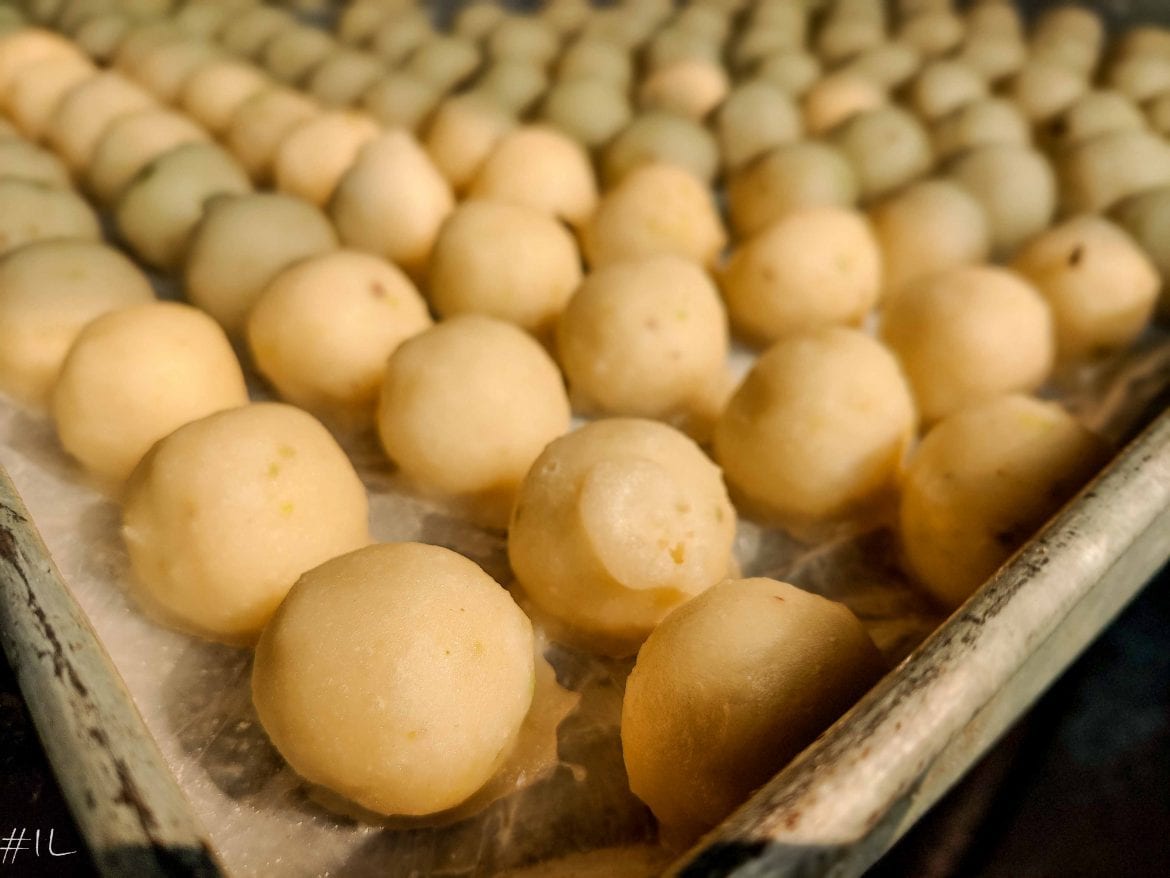
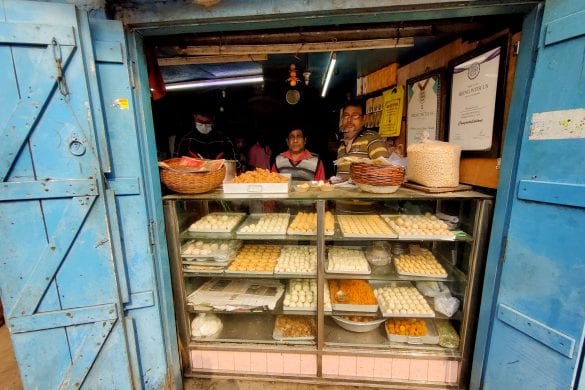
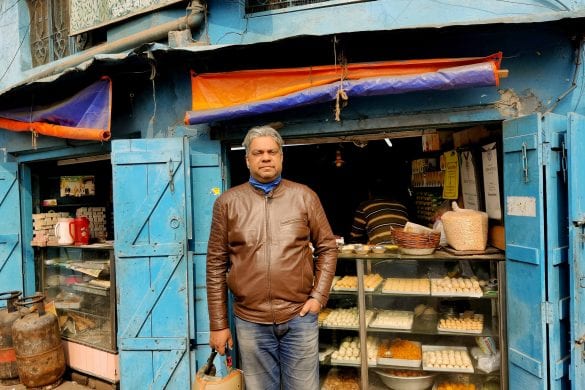

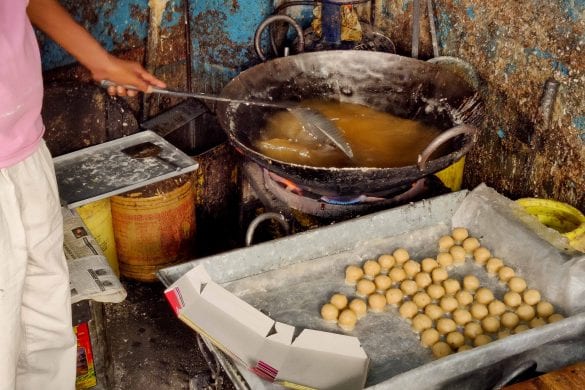
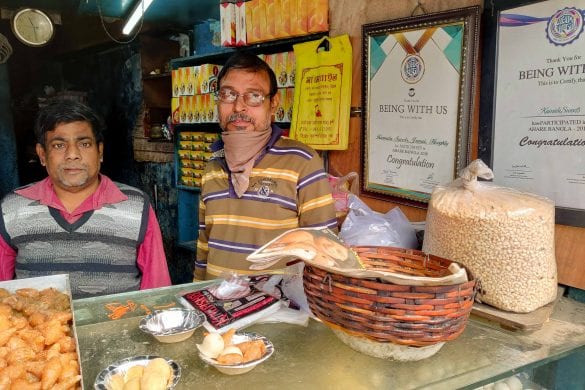
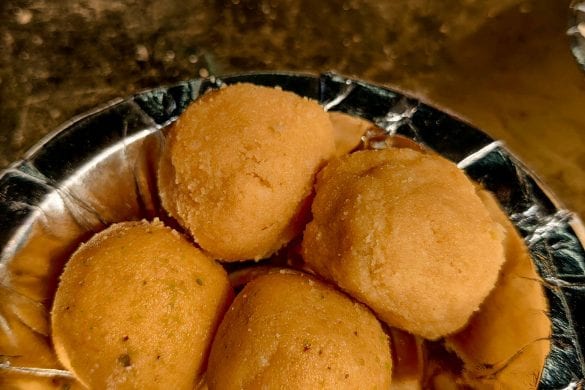
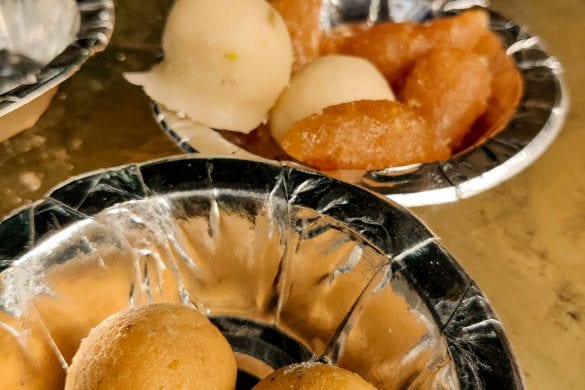
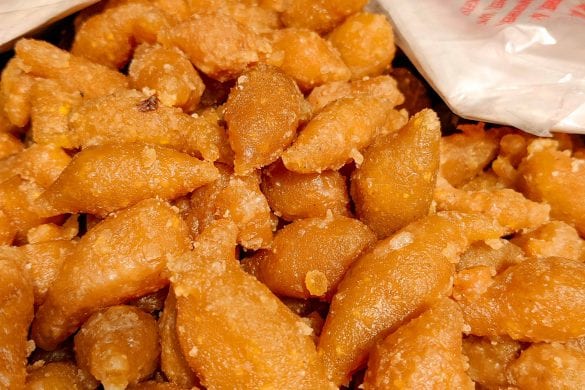
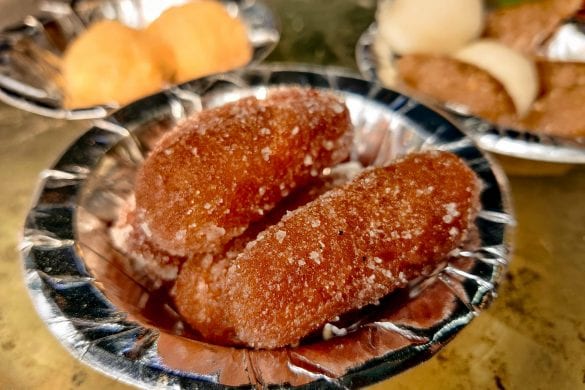
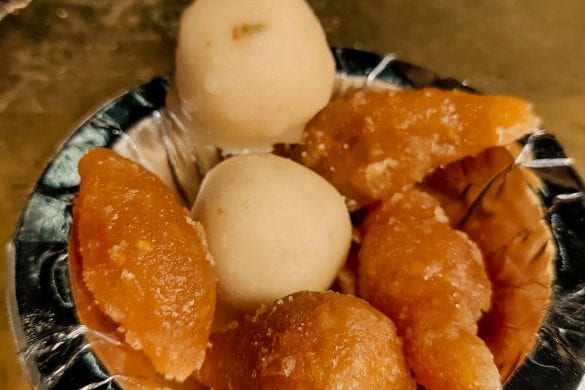


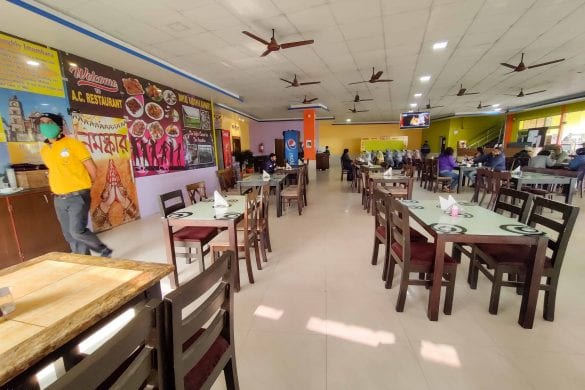


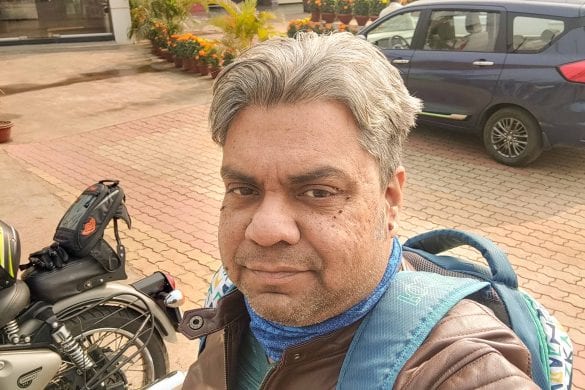
6 comments
Is Monohara sandesh available in any sweetshops in Kolkata?
Thay are available at Girish ch Dey and Nakur Ch Nandy
Nothing can beat “Nikuti” from Shantipur. There are only 2 old sweet shops near Dakghar more offer authentic one with pinch of pepper sprinkled on top (like Salt Bae style). 😛
okay, good to know
[…] very very good and definitely recommended. The manohara was pretty average and I’ve actually tasted better stuff at Janai. But it’s worth a visit for the Chhanar Goja […]
[…] 3. Mohamushkil. Lahiri, Indrajit. “Janai-er Manohara and a confused identity.” Last modified January 2, 2021. https://moha-mushkil.com/janai-manohara-nabanna-sweets-of-bengal/ […]